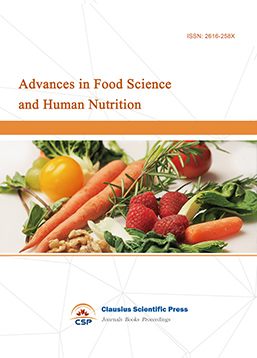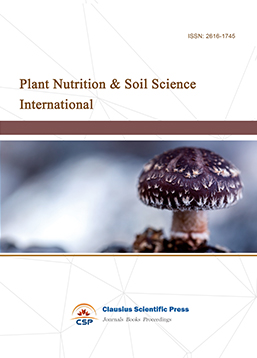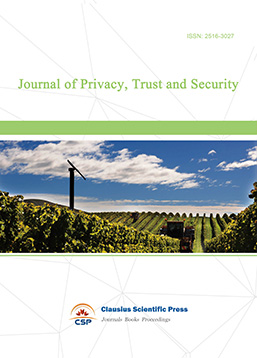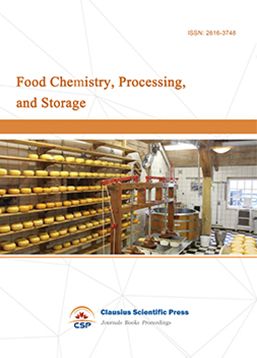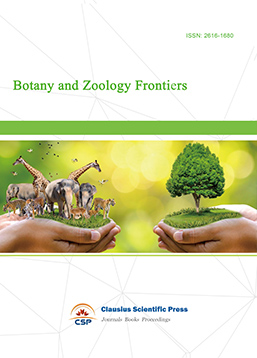Analysis of the Response of Kiwifruit to Soil Water Deficit
DOI: 10.23977/jmcs.2022.010107 | Downloads: 46 | Views: 2710
Author(s)
Yun Wu 1, Jieming Zhu 1
Affiliation(s)
1 College of Water Resources and Civil Engineering, Hunan Agricultural University, No. 1, Nongda Road, Changsha, China
Corresponding Author
Yun WuABSTRACT
Kiwifruit is one of the most successfully commercially cultivated fruit tree species in China and is grown on a large scale and has a pivotal position in the development of the fruit tree industry in China. Seasonal drought is the main disaster weather in southern kiwifruit cultivation, and timely and accurate access to drought information is essential for southern kiwifruit cultivation. We investigated the effects of soil moisture reduction of the morphological and physiological indicators of kiwifruit by using Xu Xiang soft date red kiwifruit cultivars as materials and set up two moisture treatments with adequate water supply and gradual reduction of soil moisture at the end of flowering period to provide scientific basis for the identification and monitoring of kiwifruit drought. The results showed that the physiological indicators started to be affected one after another after a continuous reduction of soil moisture for 3d, and the morphological characters started to receive stress around 9d. The most sensitive kiwifruit physiological indicators were the CO2 stomatal conductance of the first apical leaf and the most sensitive of morphological indicators were the ground diameter. The onset of CO2 stomatal conductance, photosynthetic rate, chlorophyll content, ground diameter and plant height of the first fully expanded leaf of kiwifruit was 3, 4, 7, 9 and 10 d. The water deficits were 8, 11.2, 20.9, 24.1 and 30.6 cm3, respectively, and the corresponding soil relative moisture was 71.17%, 71.09%, 70.87 %, 70.7% and 70.8%, 70.7% and 70.8%, respectively. This indicates that drought in kiwifruit first manifests itself in changes in physiological characteristics and then in morphological characteristics.
KEYWORDS
Kiwifruit, soil water deficit, process analysis, Physio-ecological indicators, thresholdsCITE THIS PAPER
Yun Wu, Jieming Zhu, Analysis of the Response of Kiwifruit to Soil Water Deficit. Journal of Modern Crop Science (2022) Vol. 1: 59-66. DOI: http://dx.doi.org/10.23977/jmcs.2022.010107.
REFERENCES
[1] Qi X, Guo D, Wang R, et al. Development status and suggestions on Chinese kiwifruit industry. (2020) J. Fruit Sci, 37: 754-763.
[2] Jiang, S., Zhao, L., Liang, C., et al. Leaf-and ecosystem-scale water use efficiency and their controlling factors of a kiwifruit orchard in the humid region of Southwest China. (2022) Agricultural Water Management, 260: 1-15.
[3] Zhong C, Huang H, et al. Small Fruit Drives Big Industry and Helps Peasants to Shake off Poverty. (2017) Science &Technology for development, 13: 455-460.
[4] Cui Z, Huang X, Wang J. Study on the suitable soil moisture content of Chinese kiwifruit. (1988) J. Fruit Sci, 4: 169-171.
[5] Li, X., Ren, G., et al. Change in the heatwave statistical characteristics over China during the climate warming slowdown. (2021) Atmospheric Research, 247: 1-11.
[6] Wang Q, Zhang X, et al. Evaluation of High Temperature Damage of Red Cartridge Kiwifruit in Sichuan Basin. (2022) Acta Agriculturae Jiangxi, 34: 183-190.
[7] He, Z., Lu, X., et al. Effect of soil water content threshold on kiwifruit quality at different growth stages with drip irrigation in the humid area of Southern China. (2023) Scientia Horticulturae, 307: 1-11.
[8] Xu X, Chen J, et al. Ecophysiological Effectiveness of Covering and Mulching Kiwifruit Orchard with Bahiagrass in the Dry Season of Mid-summer. (2001) Acta Agriculturae Universitis Jiangxiensis, 2: 209-211.
[9] Zhang Y, Chen Q, Lan J, et al. Effects of drought stress and rehydration on physiological parameters and proline metabolism in kiwifruit seedling. (2018) International Journal of Agriculture and Biology, 20: 2891-2896.
[10] Peng, Y. T., & Wang, Y. M. Effects of exogenous melatonin and abscisic acid on physiological characteristics in kiwifruit seedlings under drought stress. (2021) Agricultural Research in the Arid Areas, 39: 95-101.
[11] Bao W W, Zhang X C, Zhang A, et al. Validation of micrografting to evaluate drought tolerance in micrografts of kiwifruits (Actinidia spp.) (2020). Plant Cell, Tissue and Organ Culture (PCTOC), 140: 291-300.
[12] Gucci R, Massai R, Xiloyannis C. Mechanisms of drought avoidance in kiwifruit vines. (1995) International Symposium on Kiwifruit 444: 311-316.
[13] Zhong M, Zhang W, et al. Effects of High Temperature Stress on Related Heat-resistance Index in Kiwifruit Seedlings. (2018).Hubei Agricultural Sciences, 57: 96-99.
[14] Ye X, Ma F, et al. Physiological effects of kiwifruit lamina under high temperature stress. (2004). Journal of Northwest A&F University (Natural Science Edition, 12: 33-37.
[15] Zhou J, Cui J. Characteristics of red soil water and its responses to environmental-meteorologic factors in citrus region. (2009). Journal of Irrigation and Drainage, 28: 103-105, 123.
[16] Peng Y, Zhang W. Study on the optimum soil moisture for growth and fruit development of kiwifruit. (1995) J. Fruit Sci, 1995 (S1): 50-54.
[17] Wei L, Wang J, et al. Study on Observation of Growth Rhythm of Kiwifruit at Seedling Stage. (2018)Hubei Agricultural Science, 57: 110-112+117.
[18] Sun H, Feng L, et al. Physiological characteristics of boll-leaf system and boll weight space distributing of cotton under different nitrogen levels. (2007) Scientia Agricultura Sinica, 40: 1638-1645.
[19] Peng, Y, & Wang, Y. Effects of exogenous melatonin and abscisic acid on physiological characteristics in kiwifruit seedlings under drought stress. (2021) Agricultural Research in the Arid Areas, 39: 95-101.
[20] Chen J, Wang S, et al. Response of Maize to Progressive Drought and Red Soil’s Drought Threshold. (2007) Scientia Agricultura Sinica, 3: 532-539.
| Downloads: | 698 |
|---|---|
| Visits: | 55253 |

 Download as PDF
Download as PDF